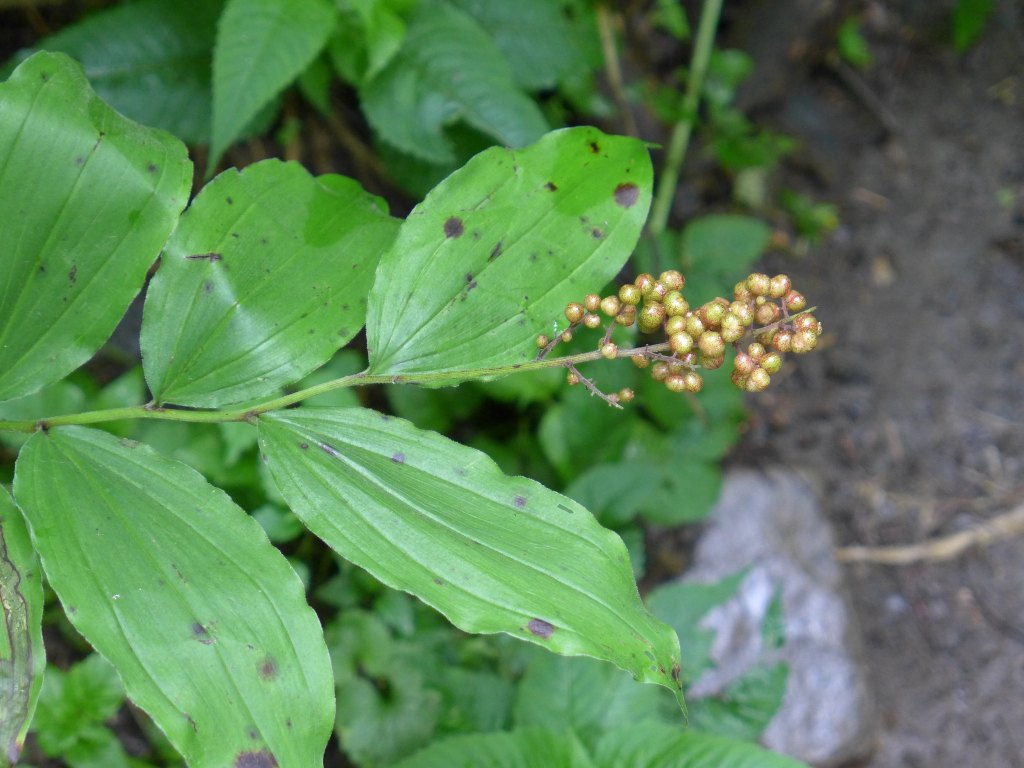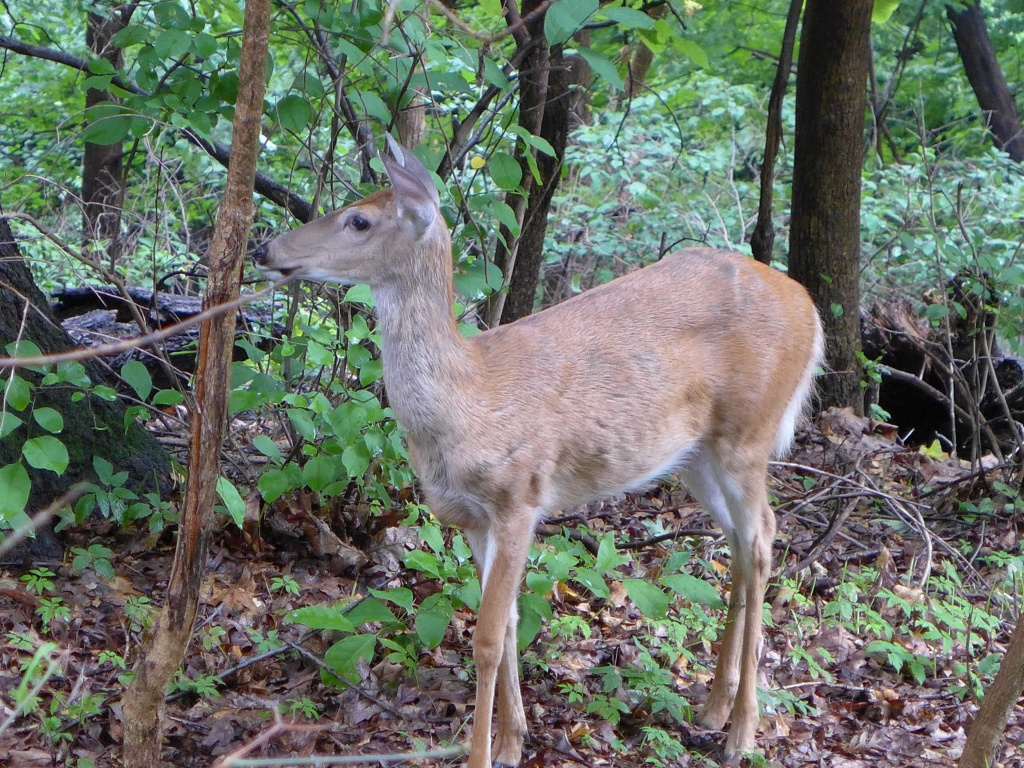
22 August 2022
Back in 2010 the City of Pittsburgh commissioned a deer count in the parks that found the population was too high and not sustainable for the habitat. Nothing has been done since then to reduce the deer population other than accidentally killing them with our cars.
Twelve years have passed. According to deer experts “Urban deer can live for 10 years; the deer population, if unchecked, doubles about every two years.” Schenley Park now has as much as 60 times the number of deer we had in 2010. This is truly unsustainable, even for the deer themselves.

Schenley’s deer have completely consumed all the good food plants and are starting to nibble the poisonous ones. The browse line is painfully obvious. In the process deer have eradicated their favorite plants from Schenley Park.
Orange (Impatiens capensis) & Yellow jewelweed (Impatiens pallida)
Orange jewelweed and yellow jewelweed provide nectar for hummingbirds and bumblebees and are a favored food of deer.


Both jewelweeds were prolific in Schenley Park as recently as four years ago.

But this year all the accessible plants have been eaten down to bare stems. The only ones that flower are those in spots unreachable by deer — on extremely steep slopes or hidden among thick cattails in Panther Hollow Lake.

Jewelweeds are annuals that must re-seed every year but no seeds are produced in this deer-browsed landscape. Impatiens will disappear from Schenley Park when the seed bank is exhausted.
False Solomon’s Seal (Maianthemum racemosum)
False Solomon’s seal used to grow throughout Schenley Park and it carpeted the ground in an area near the Bridle Trail. All of it has been eaten to the ground since 2014. Here’s what it looked like eight years ago.


White wood asters (Eurybia divaricata)
White wood asters used to bloom in Schenley’s woods. Not anymore. Here’s what they looked like in 2013.

Eradicated plants are indirect evidence of too many deer in Schenley Park. Direct evidence is their visibility every day.
A sustainably-sized deer herd would hide in the underbrush while sleeping during the day, but the browse line in Schenley is so severe there is no cover for them. The large herd has coped by becoming accustomed to people and leashed dogs.
I stood near this group of three deer on Sunday 21 August using my snapshot camera zoomed to 90mm (approximately 2x). This 8-point buck did not care that I was there.



(photos by Kate St. John)
UPDATE: I was interviewed by Andy Sheehan, KDKA News, 25 August 2022. Click on this link or on the image below. Experts warn deer are destroying Pittsburgh’s parks and moving into neighborhoods.

Three articles, 2017-2019, about deer in Allegheny County by John Hayes, Post-Gazette:
Deer are wiping out more than just plants, they are consuming the next generation of forest itself! Check out the works of Dr. Tom Rooney, ecologist at Wright State University, he’s founded his career on the study of deer in eastern N.American hardwood forests.
Matt, I’ve started to track the trees too. I’m not surprised they browse oak and ash but I learned a new thing by looking: They won’t eat buckeye.
Clearly we need a bow hunting season in the park. These deer are all skin and bones clearly the over population isn’t good for them either.
Our elected leaders prefer to spend millions on contractors to stop erosion caused by overbrowsing deer because its too controversial to do something about the deer. In Riverview, now removing entire hillside of trees to stop erosion.
I have a meeting next Wednesday with PWSA about stormwater management in Four Mile Run. I’m going to ask them about this, and see who at the city might be overseeing the deer issue.
It is just as bad at North Park. The whole ecosystem has crashed. Zero regeneration of trees. Alien invasives have taken over. Whole hillsides are overrun with Japanese barberry and stiltgrass.
What a shame.
Called Animal Control today and learned that the city doesn’t do anything with deer unless they are injured and/or dead. The PA Game Commission is in charge of dealing with all deer in the state. They don’t cull herds, but I’ve read about some type of birth control that keeps deer populations from growing. Hopefully we can get the right folks together to figure out how to make that happen in Schenley Park.
Barbara, deer birth control is more problematic than hunting. It costs money, hormones must be readministered regularly, and untreated deer move in to foil the plan. Here’s the story of deer birth control at Cornell Univ where they did a very thorough job of measuring the results and found that the population stayed stable (did not drop!) even though female deer were sterilized. https://wildlife.org/wsb-study-sterilizing-female-deer-doesnt-reduce-deer-populations/
Unfortunately I think the jumping worms are as much the culprit. I have discovered them on Firelane trail and in the woods near the OLEA. PH is changed by them such that only stiltgrass and knotweed can root in the wake of the overbrowsing. Such monocultures are expanding by leaps and bounds each year. Perfect storm.
I just checked the Game Commission Doe license page. Here is the tally for your area:
2B 49000 tags offered 41972 tags remaining
Schenley Park is in WMA 2B but hunting is not allowed in city parks by law. The law would have to change before hunting can become a control mechanism.
Kate, I saw you on the KDKA news yesterday talking about this issue. Everything you said was spot on. We now have 4-foot tall wire fence enclosures around as many of our treasured plants and young trees as possible. It’s not a pretty solution, but it helps.
Kate, I’m grateful you are shining a light here. City and county need to get serious and make a plan.
Great work thanks for sharing. I grew up in Oakland and was a park kid, teen and adult. I ran the trails and hills for decades. I don’t think I saw a deer until early 2000’s. But suddenly there was that explosion and now they are everywhere. I live in New Homestead now still city and the deer are regulars day and night on our streets. Every year there’s a new crop of cute fawns four and five to a group. Growing any veggies is a challenge they usually win. Keep us posted. The solution will not be easy with such an active park.
Does anyone think that tearing down their habitat to build ours is a serious problem?
Kathy R, I’ve thought about your question as regards the urban deer I am familiar with in the East End of Pittsburgh including Schenley Park. Humans “tore down” the deer habitat in the East End of the city in the late 1800’s to early 1900’s so there has been no deer habitat here for 100-120 years and no deer (or no noticeable deer) for about 100 years. Then around 2010 deer decided to come into the City and they have not left. Deer chose the City habitat with its streets, sidewalks, streetlights (not dark), backyards, culverted streams, playgrounds and parks. Their population is thriving in the City, so from their point of view it was a good decision. “Tearing down their habitat to build ours” (to build the East End) was not a long term problem for these adaptable animals.
There were no deer in the parks when I grew up – I enjoyed going into the parks. However at 70 I am avoiding being in the park for fear of deer ticks – I know a few people who have suffered long term because of Lyme disease. Also deer have squeezed themselves into my yard this year half block from Forbes Ave. So, I don’t go in my yard any more either, they ate all the plants I bought.
I assume all the folks the who are against culling the herd are vegetarians.